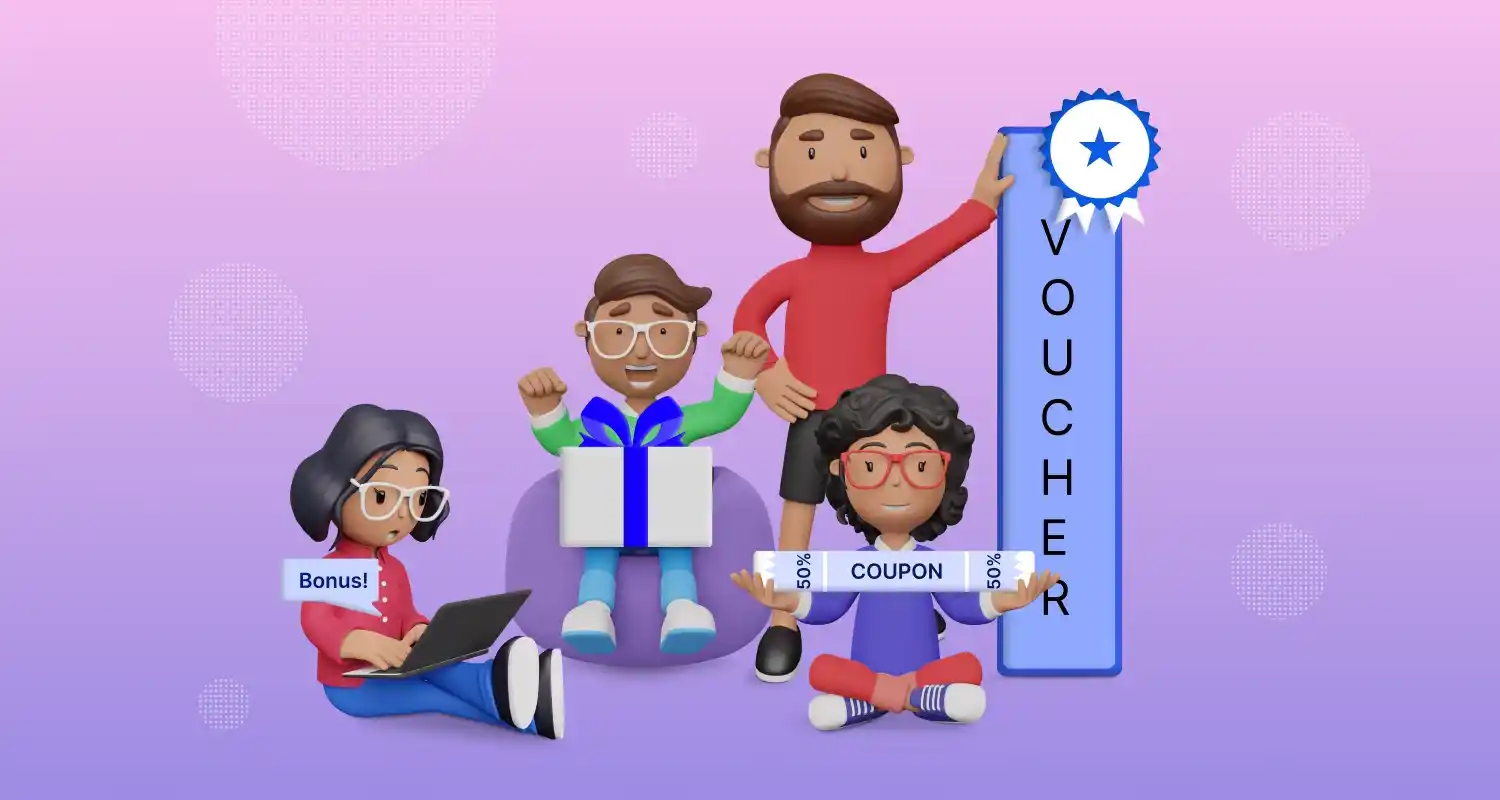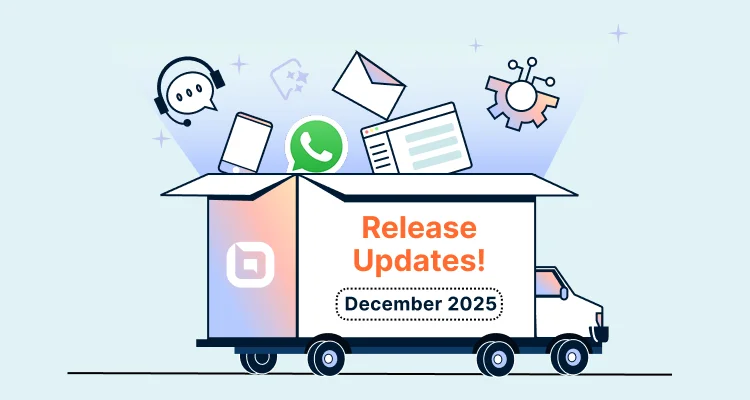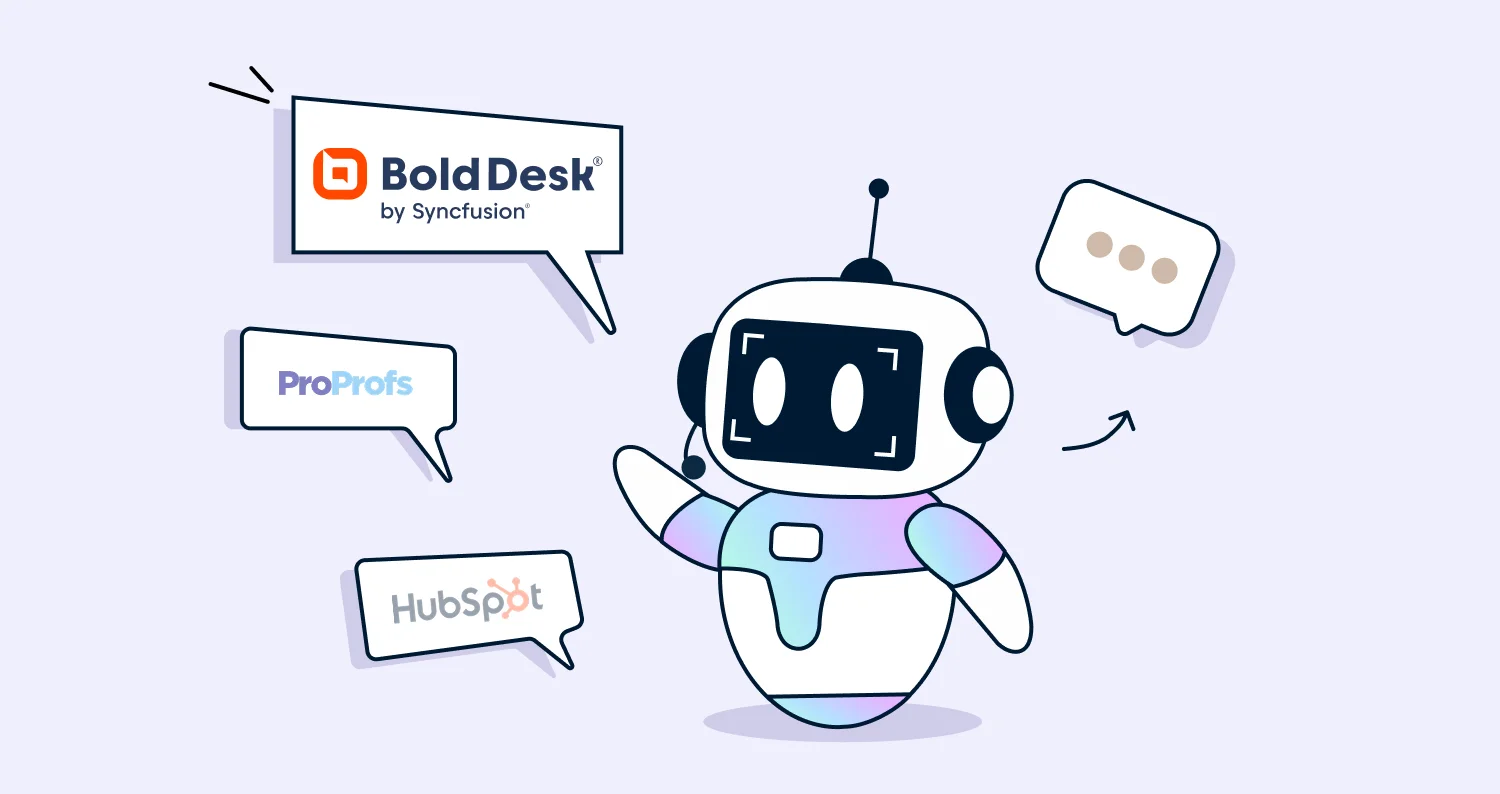Customer loyalty programs have become a cornerstone strategy for businesses aiming to strengthen retention and boost loyalty. In today’s competitive market, brands are shifting focus, not just on acquiring new customers, but on nurturing and retaining the ones they already have.
While customer experience optimization is essential, it alone may not be enough to secure long-term loyalty, prompting businesses to go beyond expectations by offering incentives and personalized rewards.
Customer loyalty programs prove invaluable in transforming satisfied customers into devoted brand advocates.
A 2021 report on customer advocacy by Mention Me, a referral marketing platform, found that brands that reward loyalty are likely to see a repeat purchase from 40% of their customers.
In this article, you’ll discover what customer loyalty programs are, explore their various types and benefits, and uncover best practices for crafting effective programs that foster lasting customer relationships and drive sustainable business growth.
What are customer loyalty programs?
A customer loyalty program is a strategic marketing approach that recognizes and rewards loyal customers and encourages them to continue purchasing or engaging with a brand.
Rewards can be gifts, discounts, points, or other exclusive benefits to customers that increase in value or frequency the more they buy.
Loyalty programs aim not only to enhance customer retention strategies and drive growth, but also to turn regular customers into enthusiastic brand promoters.
6 Types of customer loyalty programs for small businesses with examples
Growing businesses can employ various types of loyalty programs to keep their customers hooked.
Let’s explore types of loyalty programs with examples from brands that have utilized them successfully.
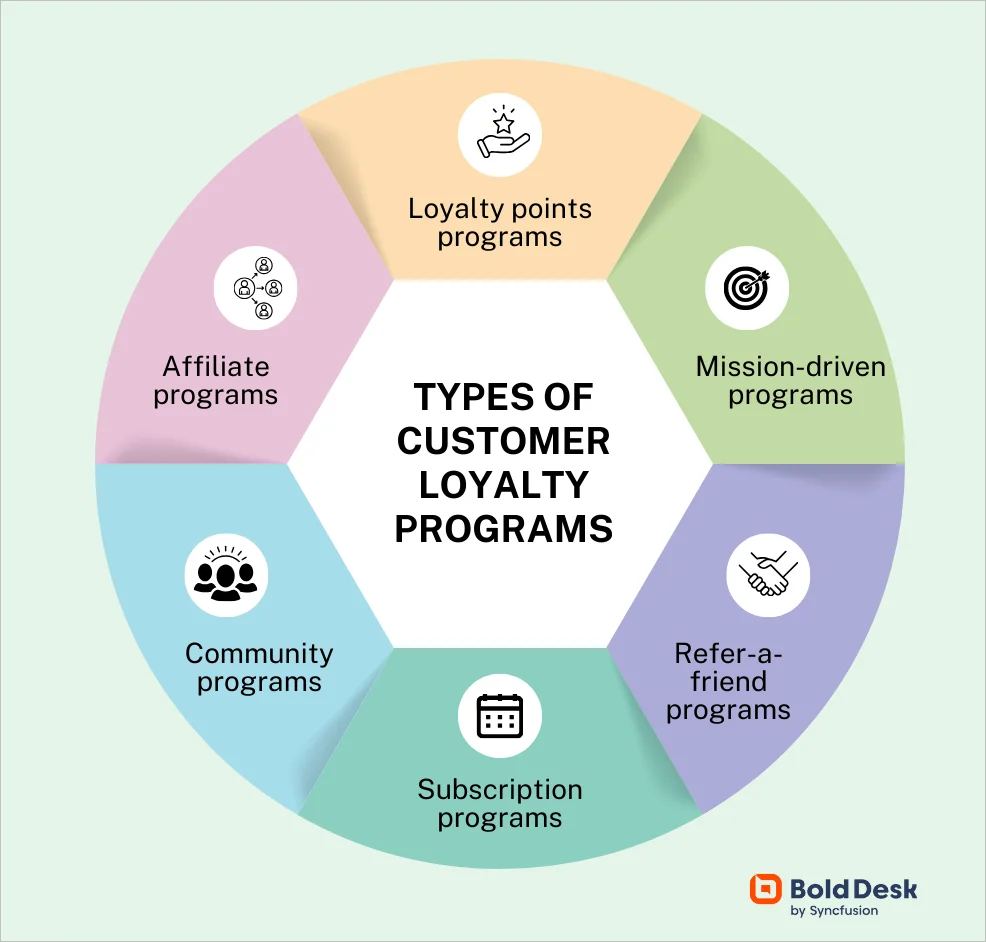
1. Loyalty points programs
Loyalty points programs are one of the most popular types of customer loyalty programs for businesses.
Customers earn points whenever they buy from your brand, and they can redeem these points for credit on their next purchase, discounted services, or giveaways.
They can also earn points through other ways, such as:
- Sharing a product link with friends
- Leaving product reviews
- Attending events organized by the businesses
- Downloading the business’s app
Case study
The North Face uses a points program known as XPLR Pass to reward its customers.
Customers accumulate a point for every dollar they spend at the store and additional points for downloading the North Face app, checking in at North Face stores, referring others to join XPLR Pass, checking in at US National Parks and National Monuments, and more.
Customers can join the loyalty program to enjoy:
- A 10% discount for their first online order
- A 10% discount for their birthday
- Group hikes with other program members
- Early access to limited-edition products
How can you use this kind of loyalty program in your business?
Sponsoring hiking adventures may be challenging for small businesses. However, implementing a loyalty system can be a practical and impactful alternative.
The key takeaway is to understand your customers thoroughly and design a loyalty system for small business, specifically aimed at strengthening your relationship with them.
2. Mission-driven loyalty programs
Not all rewards programs are centered on offering discounts or rewards to customers.
A mission-based customer loyalty program, also called a value-based loyalty program, is one wherein the business donates a percentage of its profit to a charity or organization.
This is an approach that aligns with customer values and gives customers the feeling that every purchase they make is a contribution to efforts aimed at positively impacting the world.
Case study
The video conferencing platform Whereby introduced a mission-driven program in 2021 that sought to give back to nature, “the thing that inspires [Whereby] on the daily.”
The brilliant program aimed to plant a tree for every three meetings that happened on the platform. Whereby partnered with Brynk, an organization dedicated to planting trees, and successfully planted one million trees across Africa.
How can you use this kind of loyalty program in your business?
Identify a charity, non-profit organization, or cause to which customers can contribute by purchasing any of your products.
This will attract new customers to your business, encourage existing customers to use or purchase your products more, and make everyone feel like they’re doing good in the process.
Businesses that are just starting out might not have the capacity to carry out large-scale missions.
Therefore, it is advisable to collaborate with charitable organizations whose missions align with the values of your business and your customers to make such a program more impactful.
3. Refer-a-friend loyalty programs
Customer referral programs give customers exclusive discounts or special offers for referring their friends, colleagues, or family to the company.
These programs provide existing customers with a unique referral code or link that their friends can use when making a purchase or signing up for a service.
The referees can subsequently qualify for a similar discount when they refer others through the program. It’s a win-win situation: the business gains new customers, and existing customers receive a reward for their referral.
Case study
Dropbox successfully implemented a refer-a-friend loyalty program in which users who referred a friend were awarded an additional 500 MB of storage space.
Simultaneously, each person who accepted an invitation and registered via the referral program was also given 500 MB of free storage.
Users could repeat this process up to 32 times, potentially gaining a maximum of 16 GB of extra free storage. This program led to a 3900% surge in users in only 15 months.
How can you use this type of loyalty program in your business?
You wouldn’t think Dropbox, a cloud storage giant, would have trouble acquiring new customers.
However, all businesses, even those with a well-established online presence, are at the mercy of customer acquisition expenses.
Implement an effective referral program to cut customer acquisition costs and witness an increase in clients.
4. Subscription reward programs
A subscription program, also called a paid loyalty program, involves customers paying a regular subscription fee in exchange for exclusive perks, discounts, or access to premium products or services, and benefits that are otherwise unavailable to non-subscribers.
Case study
Amazon runs one of the most popular subscription-based customer loyalty programs: Amazon Prime.
For an annual or monthly subscription fee, members receive numerous benefits, such as:
- Free two-day expedited shipping on millions of items on Amazon
- Access to thousands of movies and TV shows via Prime Video
- Unlimited reading on any device via Prime Reading
- Access to ad-free music streaming via Prime Music
- Exclusive deals, especially during Amazon’s annual Prime Day
The loyalty program has been hugely successful, with Prime members spending twice as much as non-Prime members.
How can you use this type of loyalty program in your business?
Analyze your market to find the most pressing needs of customers and include the solution as an immediate benefit for users when they subscribe to your program.
Jeff Bezos, the founder of Amazon, realized that building the best premium loyalty program would require listening to customers.
He first addressed customers’ biggest pain point, shipping costs, and subsequently added more benefits to the loyalty program.
5. Community reward programs
Community programs do not offer customers rewards like discounts or special offers. Instead, they bring together like-minded customers and offer them a chance to:
- Engage with each other
- Learn more about the company and its offerings
- Ask questions and seek solutions
- Share experiences
- Exchange ideas on how to best utilize products
- Test products before they are officially released
Case study
In addition to a typical loyalty points program, beauty product retailer Sephora also has an online community known as the Beauty Insider Community.
The Community provides a platform where any rewards program member can meet and engage, ask questions, exchange beauty tips, share pictures, and participate in challenges to earn badges.
How can you use this type of loyalty program in your business?
Implement a community program that brings customers with similar interests together to build their confidence in your brand. This will allow you to:
- Easily collect valuable feedback on your offerings
- Receive recommendations on where to improve
- Give customers a sense of belonging
6. Affiliate programs
Customer affiliate programs involve working with loyal customers for mutual benefit. These programs offer loyal customers an opportunity to contribute to the growth of the business and earn something by doing it.
The best way to set up and monitor these types of incentive programs is with an affiliate marketing software or a loyalty platform. You will have full control over how you want to celebrate and honor both customers and their referral. In addition, you can have real-time analytics to make data-driven decisions.
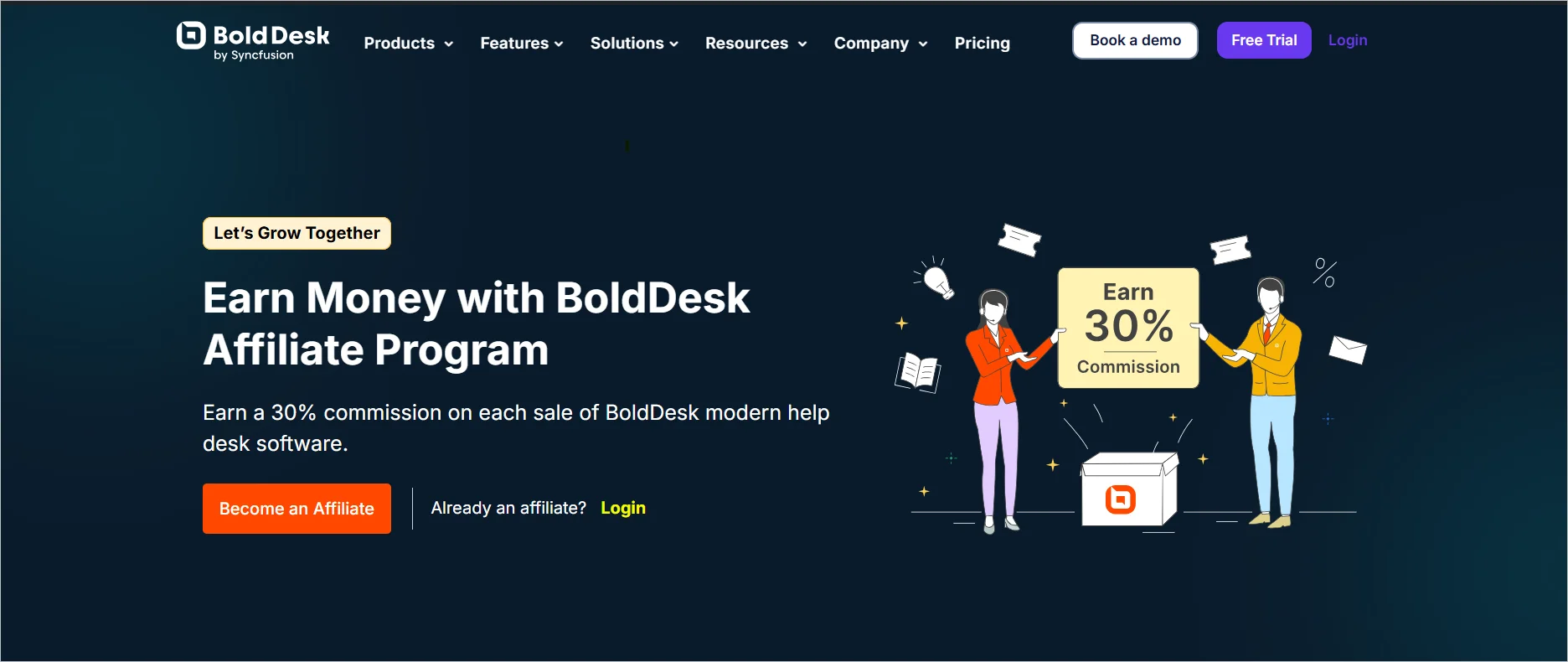
For example: If many customers opt into your loyalty program but sales don’t increase proportionally, it may be time to enhance your incentives.
Consider offering more targeted rewards for loyal customers, such as exclusive discounts, free shipping, or referral bonuses like coupon codes, to better motivate repeat purchases and drive engagement.
They aren’t loyalty programs per se, but it’s a great way to use the loyalty you establish to your advantage and reward advocacy for some of your loyal customers.
Case study
BoldDesk offers an affiliate program that rewards customers for being brand advocates.
Customers using social media can share their loyalty to BoldDesk with their followers through a link.
These customers-turned-affiliates can earn commissions as they promote their trusted and reliable help desk software.
The program offers:
- A dedicated affiliate manager that provides guidance throughout the program
- Instant access with a personalized referral link and all the tools affiliates need
- A 30% commission for 12 months on each sale of BoldDesk
- A 90-day cookie period within which affiliates are rewarded if their links turn into sales
How can you use this kind of program in your business?
Loyal customers are often willing to contribute to the growth of a brand they love.
Some of them are social media or YouTube influencers who can reach an established audience that might be interested in your products.
Offer them a chance to play a role in your business’s growth by introducing new customers and acknowledging affiliates’ contributions with rewards like commissions, free products, or discounts.
This is smart marketing, as you only pay if the affiliate succeeds.
How to create a customer loyalty program
Customer loyalty doesn’t happen overnight. It requires maintaining consistency in the services and products that your customers love, and thorough planning and implementation of customer loyalty programs.
Let’s discuss how to create an effective customer loyalty program for your business.
Set clear goals for your loyalty program
The initial stage of developing a successful customer loyalty program involves identifying your desired outcomes. Establish goals and objectives based on the kind of results you’re after.
Are you aiming to encourage recurring purchases, attract new clients, or is it about giving back to your customers and the community?
Clarifying what you really want will assist in determining the appropriate type of loyalty program to implement.
Know your customers better
Before implementing a loyalty program, make sure you have a thorough understanding of your customers.
Examine their buying habits, preferences, and what motivates them. The more you understand them, the more likely you’ll be able to create a program that appeals to them.
Offer attractive, personalized rewards
Offer rewards that are attractive enough to maintain customer interest and promote repeat purchases and engagement.
It’s also a good idea to personalize rewards or experiences to suit individual customer preferences. For example, you could provide birthday gifts branded with the names of your customers.
This can make them feel special and valued.
Keep the program simple
Ensure your program is user-friendly and easy to comprehend, as any complexities may cause customers to lose interest. Clearly explain how customers participate and benefit.
Additionally, rewards should be easy to earn and redeem to motivate customers to keep buying.
Leverage technology
Use technology to make your program easy to execute and monitor.
For example, you could deploy customer loyalty program software to track user engagement or offer a mobile app where customers can track their points and redeem rewards.
Communicate effectively and promote the program
Keep in touch with your customers and let them know about any new or upcoming loyalty programs, rewards, or program updates.
Once the program has been launched, make sure you advertise it widely to let your customers know about it.
You can strategically communicate the benefits of the program through various channels to maximize customer awareness.
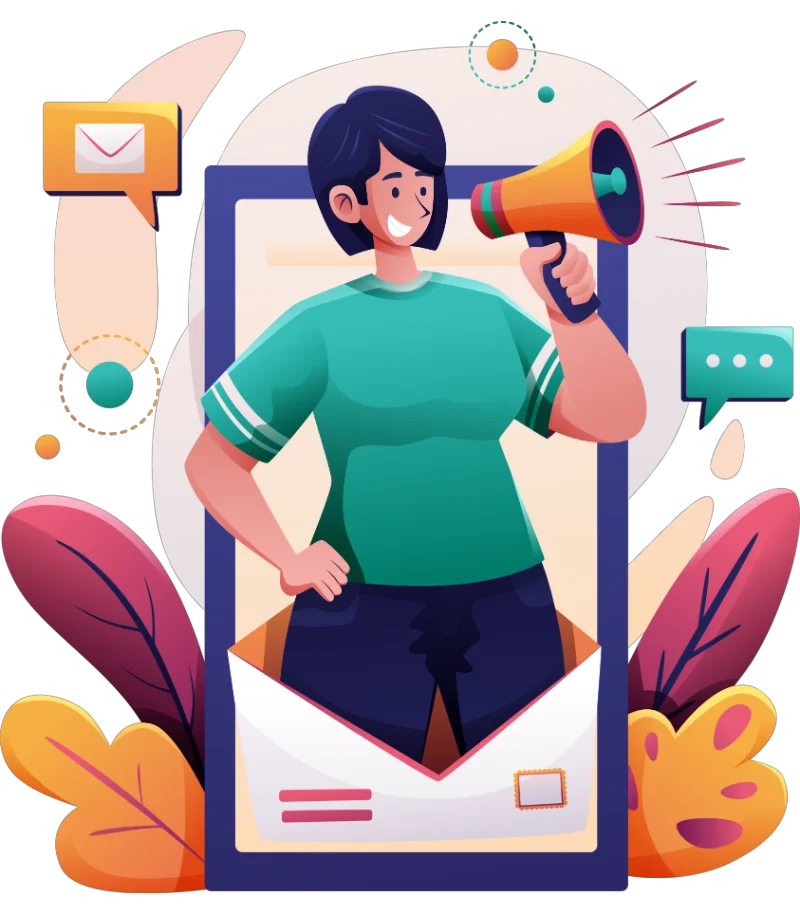
You can promote the program via:
- Banners in your physical store.
- Pop-ups on your website.
- Text messages or email campaigns.
- Social media hashtags.
Regularly evaluate and improve the program
Finally, regularly evaluate the effectiveness of your loyalty program and make any necessary improvements.
You can send surveys and gather customer feedback or analyze program data to see which rewards are most popular.
Benefits of reward programs for customers
The following are the benefits of customer loyalty programs:
Establishes strong customer relationships
Loyalty programs foster a sense of belonging and appreciation among customers. They provide rewards or benefits that:
- Make customers feel valued
- Encourage their continued patronage
- Strengthen their emotional connection to the brand
Loyalty programs can also be utilized to tailor offers and communications that resonate with customer preferences, further strengthening customer relations.
Boosts revenue and saves costs
Customer loyalty programs incentivize repeat business, encouraging customers to make more frequent purchases and potentially spend more during each transaction.
After all, members of customer loyalty programs typically spend 12% to 18% more than other customers.
This steady flow of repeat customers provides a reliable source of revenue and can also lead to word-of-mouth referrals, attracting new customers and further increasing sales.
Additionally, maintaining existing customers is typically more cost-efficient than acquiring new ones.
This is due to the ability of businesses to capitalize on existing relationships, eliminating the need for aggressive marketing and advertising campaigns to attract new clientele.
Generates valuable insights
Data collected from loyalty programs can provide businesses with valuable insight into customer behavior, enabling them to tailor their products, services, and marketing strategies to better meet customer needs and maximize profits.
Improves customer retention and reduces churn
Customer loyalty programs encourage customers to continue purchasing from your brand, creating a sense of loyalty, and reducing the likelihood of them switching to a competitor.
Effective customer retention programs often lead to reduced customer churn rates.
Enhances brand advocacy
Loyalty programs aid in shaping a favorable customer perception of your brand. Since these programs make customers feel appreciated and valued, they are more likely to become brand ambassadors.
The sustained interaction that these loyalty plans encourage also strengthens brand awareness and trust.
Offers a competitive advantage
A loyalty program gives customers the impression that they could save money by choosing your brand over others.
Businesses can take advantage of this impression by offering attractive rewards compared to their competitors to appeal to customers who want to save money.
Reward your customers with high-impact customer loyalty programs
Customer loyalty programs offer a compelling way for businesses to not only prove that they value their customers but also increase revenue and cultivate a mutually beneficial relationship.
Remember, at the core of every successful loyalty program is a keen understanding of the customer’s needs and preferences. Adopt the best practices we’ve discussed to create an effective loyalty program that truly appeals to your customers.
BoldDesk helps businesses run effective loyalty programs by providing tools for efficient workflows. Don’t just take our word for it.
Contact us to schedule a live demo to experience firsthand how BoldDesk’s capabilities can help you get started with your program. Or, start a free trial to get instant access today.
We hope this blog post was insightful. Do you have any additional comments or feedback? Drop them in the comment section below!
Related articles
- 9 Effective Metrics to Measure Customer Loyalty
- SaaS Affiliate Programs: Benefits and Best Practices for Affiliates
- 11 Effective Customer Engagement Strategies for Long-Term Business Success
Frequently Asked Questions
A customer retention program is a strategic initiative designed to keep existing customers engaged and loyal. It helps reduce churn, increase repeat purchases, and build long-term relationships with your customer base.
A loyalty system for small businesses offers tailored rewards and incentives that resonate with your specific audience. It helps small businesses compete effectively by encouraging repeat visits and fostering brand loyalty.
Yes, customer loyalty cards, whether physical or digital, remain effective tools for tracking purchases and rewarding repeat customers. They can be integrated with apps or POS systems to streamline the experience.
Service-based businesses benefit from reward programs for customers that offer discounts, exclusive access, or referral bonuses. These programs build trust and incentivize ongoing engagement.
A robust loyalty platform should offer customizable reward structures, real-time analytics, multi-channel integration, and scalability. It should support both customer retention programs and loyalty systems tailored to your business size.
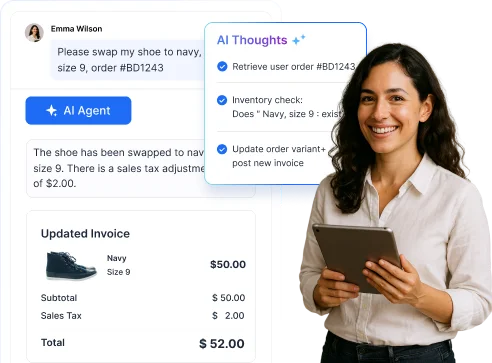


















 Email Ticketing System
Email Ticketing System Shared Inbox Software
Shared Inbox Software Multi Brand Help Desk
Multi Brand Help Desk Internal Help Desk Software
Internal Help Desk Software Trouble Ticketing Software
Trouble Ticketing Software Mobile Help Desk
Mobile Help Desk 









